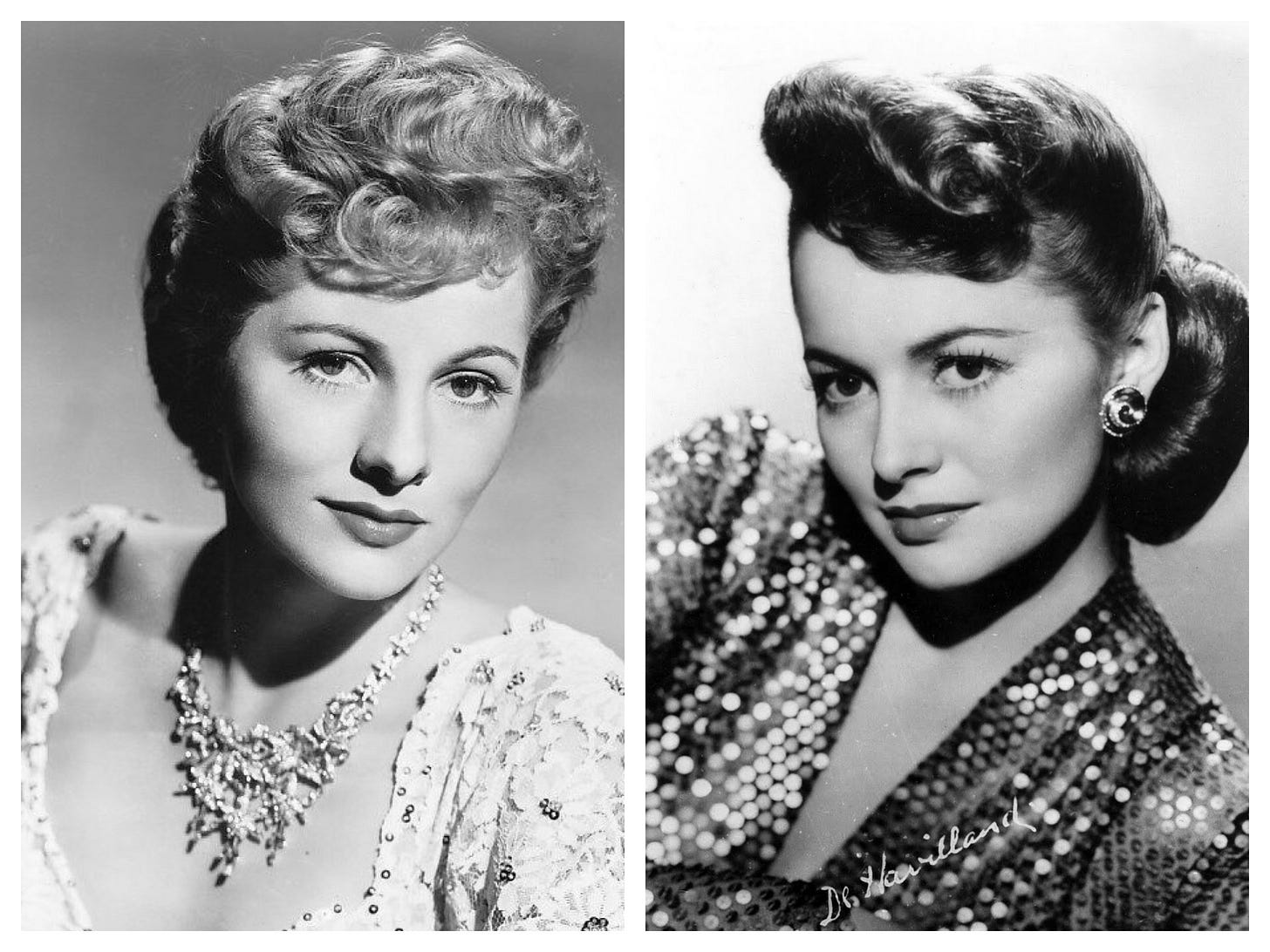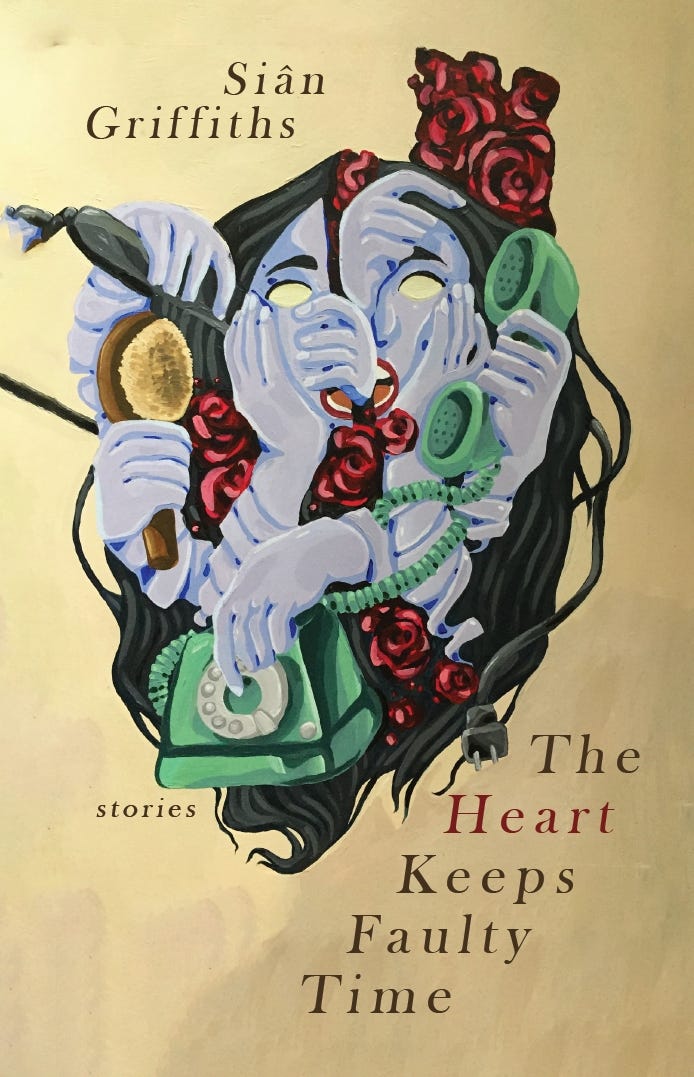Something Interesting
Two sides of a story
I have the tendency after I watch a movie to look it up in Wikipedia to find out what I missed out on when I watched the film. Things like the Marvel Cinematic Universe are ripe for this sort of thing where I learn that some minor character that I’d paid little attention to turned out to be of great importance to the story, but most often it ends up being the typical Wikipedia rabbit hole where starting to read about Toy Story 3 leads to learning about 13th-century Chinese child-rearing practices.
One such rabbit hole opened up after I watched the Alfred Hitchcock version of Rebecca with Joan Fontaine as the second Mrs de Winter. Looking at the biography of Joan Fontaine, I learned that her birth name was Joan de Beauvoir de Havilland.
Now wait, I thought, wasn’t there another classic-era actress named Olivia de Havilland? This was her sister. From the article, I read:
Olivia was the first to become an actress; when Fontaine tried to follow her lead, their mother, who favored Olivia, refused to let Joan use the family name. Subsequently, Fontaine had to invent a name, taking first Joan Burfield, and later Joan Fontaine taking her stepfather's surname. Biographer Charles Higham records that the sisters had an uneasy relationship from early childhood, when Olivia would rip up the clothes Joan had to wear as hand-me-downs, forcing Joan to sew them back together. A large part of the friction between the sisters stemmed from Fontaine's belief that Olivia was their mother's favorite child.
Well, this was interesting and something I didn’t know about although I imagine people who are more into films of the 1930s through 1950s doubtless were aware.
But where things get really interesting is once we dig into the corresponding biographies of the two sisters on Wikipedia. There’s a tendency to think that there’s a uniform distribution of information across Wikipedia articles, and that we’ll get more or less the same story in related articles, but human writers are prone to bias. The final break between the two sisters took place when their mother died in 1975. In the article on Joan Fontaine we read:
The sisters reportedly did not completely stop speaking to each other until 1975, after their mother's funeral, to which Joan, who was out of the country, was not invited.
While in the Olivia de Havilland article, the account of the split is a little different:
The final break between the sisters occurred in 1975 over disagreements over their mother's cancer treatment—de Havilland wanted to consult other doctors and supported exploratory surgery; Fontaine disagreed. Fontaine later claimed her sister had not notified her of their mother's death while she was touring with a play—de Havilland in fact had sent a telegram, which took two weeks to reach her sister.
Interestingly, the extended account of the split cites Fontaine’s own autobiography as a source.
But for the really interesting case of two sides of a story, I’m going to turn to another pair of Wikipedia articles about more recent history.
Listening to the You’re Wrong About podcast, I learned that Yoko Ono had a daughter from her marriage before she met John Lennon (the Beatles Anthology includes an improvised version of “Oh Darling” where Lennon sings “I’m free at last” as part of the lyric when he learns that Oko’s divorce has finally been cleared). The account of the custody battle in the Yoko Ono Wikipedia article states:
Ono and Cox divorced on February 2, 1969, and she married John Lennon later that same year. During a 1971 custody battle, Cox disappeared with their eight-year-old daughter. He won custody after successfully claiming that Ono was an unfit mother due to her drug use.
But the article on Ono’s first husband, Anthony Cox states:
After a legal battle, Ono was awarded permanent custody of Kyoko. However, in 1971 Cox, who had joined a religious group known as the Church of the Living Word, or “The Walk,” after his divorce from Ono, vanished with his wife Melinda and Kyoko in violation of the custody order.
Recommendation
If you’re looking for a great read that’s outside the usual lists of recommended reading that come out at the end of the year, I can heartily recommend Siân Griffiths’s The Heart Keeps Faulty Time (affiliate link). This is a collection of mostly very short stories written with exceptional grace and style.
Recent publication
I’m a bit behind on these mailings so it’s not that recent, but my story, “The Norton Anthology of Self-Destructive Behaviors” was published in the Australian literary magazine Meniscus. They seem to have periodic problems with their website losing the latest issue(s) so I’ve made a copy of it available on my website.


